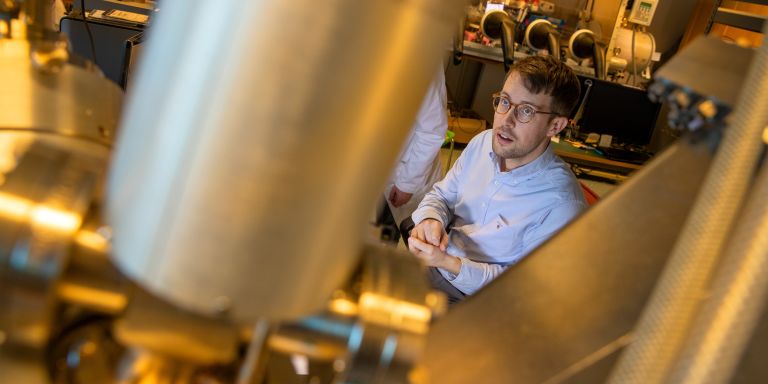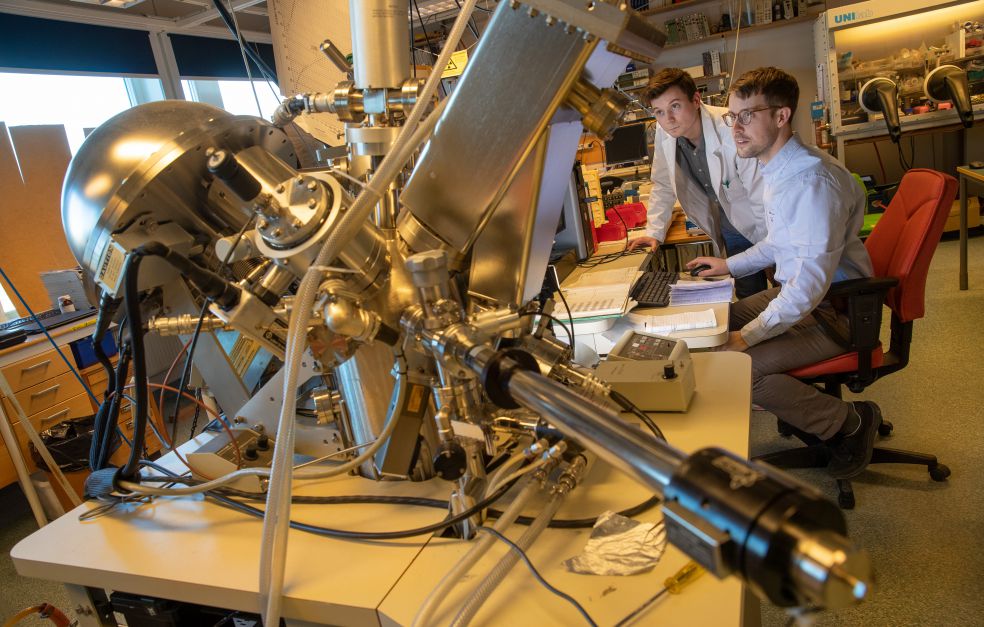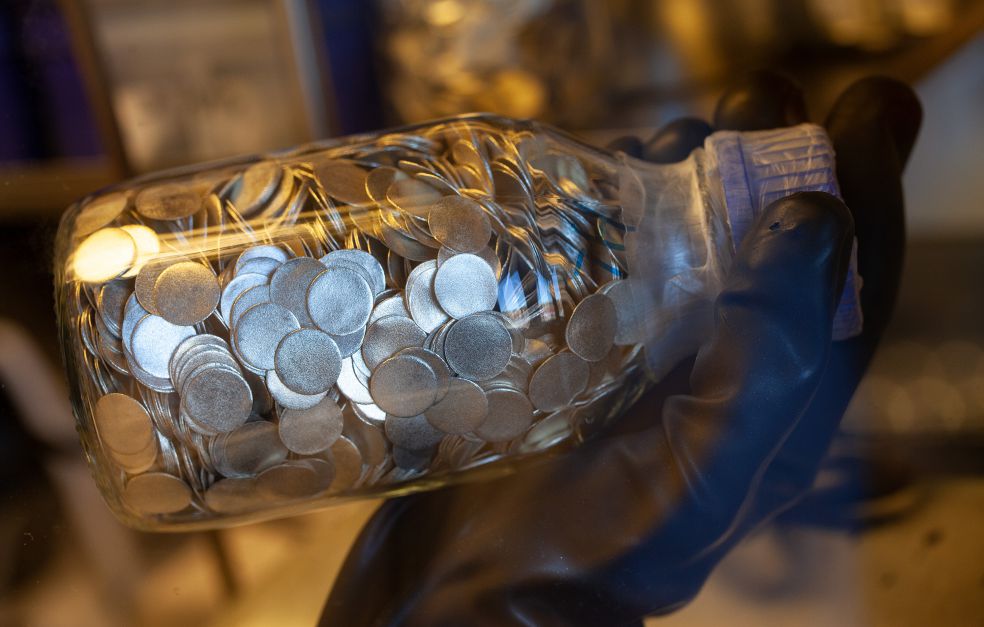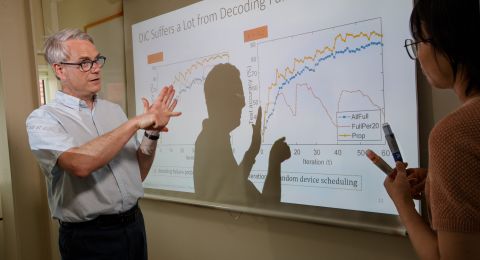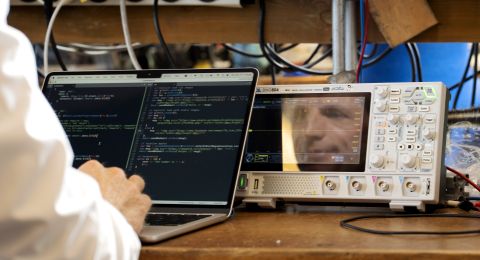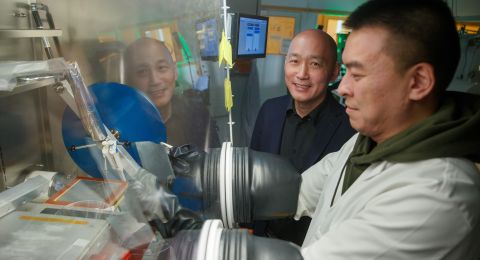Lithium-ion batteries are foreseen to store large quantities of solar energy and wind power. But for this to become a reality, researchers must first address the challenge of limited battery life. Erik J. Berg, a chemist, is seeking new answers in an in-depth study of the ageing process in batteries.
Erik J. Berg
PhD Engineering Physics, specializing in nanotechnology and functional materials
Wallenberg Academy Fellow 2017
Institution:
Uppsala University
Research field:
Structural chemistry and development of analytical methods. The aim is to gain a fundamental scientific understanding of physical-chemical processes controlling the life of Li-ion batteries.
Everyone with a laptop or a cellphone knows the problem. After just a few years, the costly gadget is often a spent force because its battery no longer charges properly. Lithium-ion batteries have a maximum life of just three to five years.
Researchers now want to ascertain why rechargeable Li-ion batteries lose their power so quickly. Berg is one of them. Having been chosen as a Wallenberg Academy Fellow, he has been able to transfer his research from Switzerland back home to Sweden. At the Ångström Laboratory in Uppsala, he is putting together a new research team with the aim of developing new experimental methods capable of studying in real time the chemical reactions taking place when a battery is charged and discharged.
“Our strategy is to devise innovative experiments, and develop new, tailored techniques. We want to study processes in batteries on an extremely small-scale. If a million chemical reactions take place every minute in a cell, I’m only interested in a hundred of them. This means we have to have the right tools to distinguish them.”
“Being chosen as a Wallenberg Academy Fellow is an endorsement for my work. The grant will play a crucial role as I build up my research. The network of mentors and other Fellows here in Sweden is also important, since I have just moved back after several years in Switzerland.”
Batteries age
The active constituent in Li-ion batteries is the lithium ion, which reacts with either a positive or a negative electrode. It is almost one hundred percent efficient, with particular emphasis on “almost”.
“In about 0.03 percent of cases the lithium ion does something else – in other words it takes part in various side reactions. This causes the battery to lose its ability to store energy. It’s a little like the way mutation in cells impairs their ability to form new cells – a kind of ageing process in batteries, just like in humans,” Berg explains.
If a battery loses 0.03 percent of the active lithium ion in every charge and discharge cycle, it will be exhausted within two to three years, which is exactly what usually happens with cellphones, for example.
Biological inspiration
Berg and his colleagues are adopting a very broad approach to different methods. One of their sources of inspiration is biology, where highly sensitive instrumentation is used to carry out detailed studies of protein structures. The researchers are modifying various advanced instruments, adapting them to avoid error sources.
“A general problem in scientific practice is the risk of disturbing the system understudy. We want to disturb the chemistry as little as possible, but still see what’s happening.”
Over the past ten years optical spectroscopy has developed to the point where the surface of materials can be examined at a proximity of one-billionth of a meter, revealing how changes occur, and extracting chemical information from the ultra-thin surface layers. Mass spectrometry is another viable technique.
“A mass spectrometer works like an exceptionally sensitive nose, and is capable of detecting differences down to a change of one-millionth. We can actually use it to measure the single reaction that went wrong.”
The results will be used to analyze what happens when batteries age, and what can be done to influence the process. Some experiments involve the design and application of surface coatings on the battery materials, or inserting active molecules into the electrolyte of the cells to suppress specific side reactions.
Development hampered by short lifespan
The development of Li-ion batteries has underpinned a technological revolution in recent decades – from laptops to electric vehicles. But the limited life of batteries has impeded development.
“Their lifespan is too short. Take electric cars. The battery is the most expensive component. These days people expect to keep an automobile for 10 to 20 years, but if the battery dies at the half-way mark, it will be an expensive investment. Battery lifespan is currently slowing the transition to electric vehicles.”
Industry therefore places great hope in the ongoing research. Berg is collaborating with Northvolt, a battery company that has invested in a battery factory in Skellefteå in the north of Sweden. Industry usually lacks the long-term commitment needed to venture into terra incognito, so academic research performs an important function. Berg explains:
“We have greater freedom to try out new concepts, whereas industry usually wants to invest in refining technologies that already exist.”
Storing energy from the sun and wind
The major future benefit of using lithium-ion batteries will be for large-scale storage of solar energy and wind power. But this will require batteries that last up to twenty or thirty years; otherwise it will not be socio-economically profitable.
“Batteries are an unrivalled technology for storing energy, and I think that if we are ever going to end our dependency on fossil fuels, there are no other options.”
A “battery-driven society” could reap huge environmental benefits. The idea that his own research might actually represent a building block for a sustainable society provides much of the impetus for Erik J. Berg’s research.
“I would probably lose heart if I were not motivated to contribute to a world more important than my own. People researching in the field of medicine probably feel the same way: a desire to help people, to drive technology and society, and to progress.”
Text Nils Johan Tjärnlund
Translation Maxwell Arding
Photo Magnus Bergström

